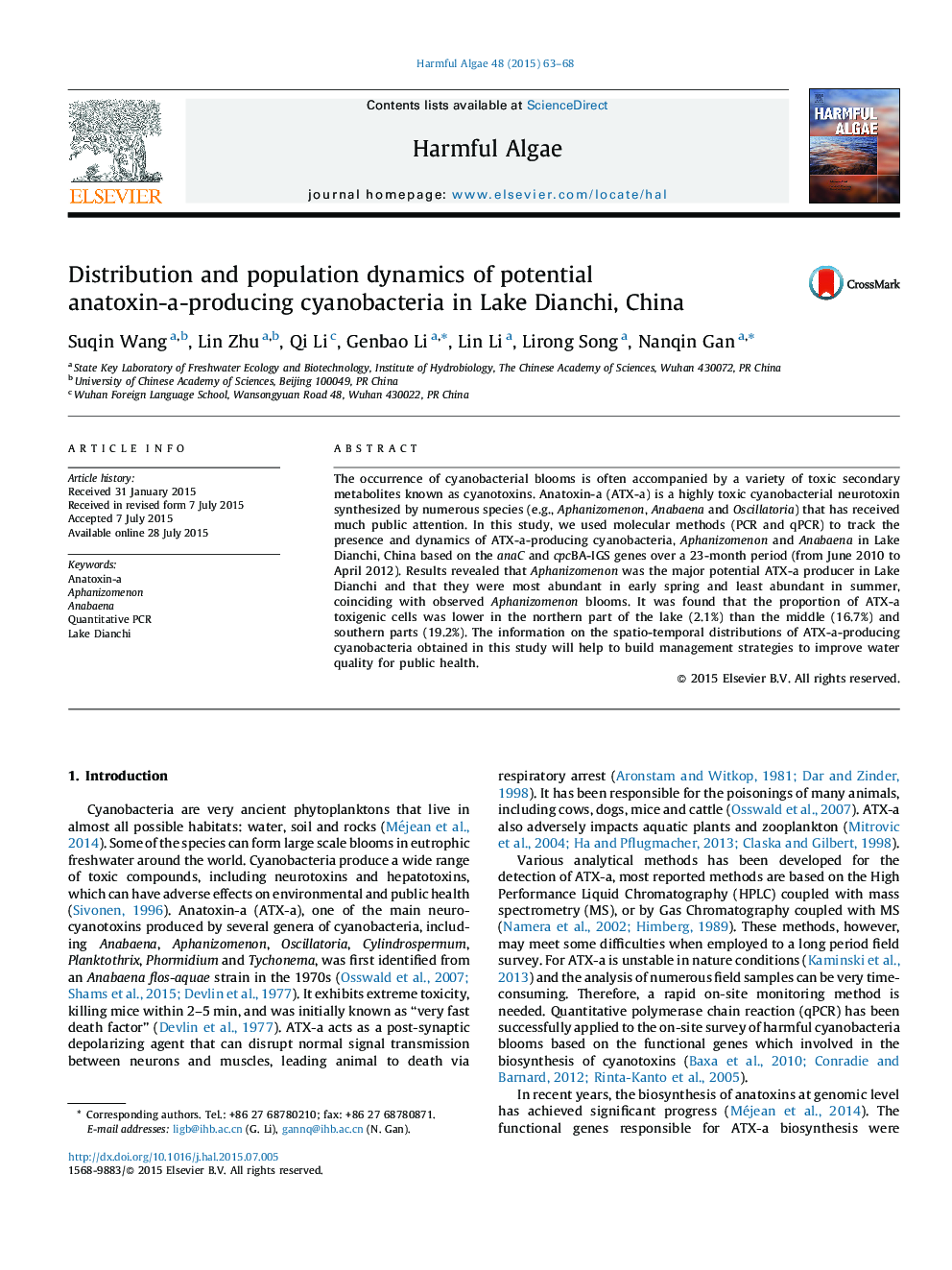| Article ID | Journal | Published Year | Pages | File Type |
|---|---|---|---|---|
| 4545268 | Harmful Algae | 2015 | 6 Pages |
•qPCR methods to quantify ATX-a-producing cyanobacteria based on the anaC and cpcBA-IGS genes were developed.•The abundance of ATX-a producers was coincident with observed Aphanizomenon blooms, which were most abundant in early spring and least abundant in summer.•The proportion of ATX-a toxigenic cells was lower in the northern part of the lake than the middle and southern parts.
The occurrence of cyanobacterial blooms is often accompanied by a variety of toxic secondary metabolites known as cyanotoxins. Anatoxin-a (ATX-a) is a highly toxic cyanobacterial neurotoxin synthesized by numerous species (e.g., Aphanizomenon, Anabaena and Oscillatoria) that has received much public attention. In this study, we used molecular methods (PCR and qPCR) to track the presence and dynamics of ATX-a-producing cyanobacteria, Aphanizomenon and Anabaena in Lake Dianchi, China based on the anaC and cpcBA-IGS genes over a 23-month period (from June 2010 to April 2012). Results revealed that Aphanizomenon was the major potential ATX-a producer in Lake Dianchi and that they were most abundant in early spring and least abundant in summer, coinciding with observed Aphanizomenon blooms. It was found that the proportion of ATX-a toxigenic cells was lower in the northern part of the lake (2.1%) than the middle (16.7%) and southern parts (19.2%). The information on the spatio-temporal distributions of ATX-a-producing cyanobacteria obtained in this study will help to build management strategies to improve water quality for public health.
